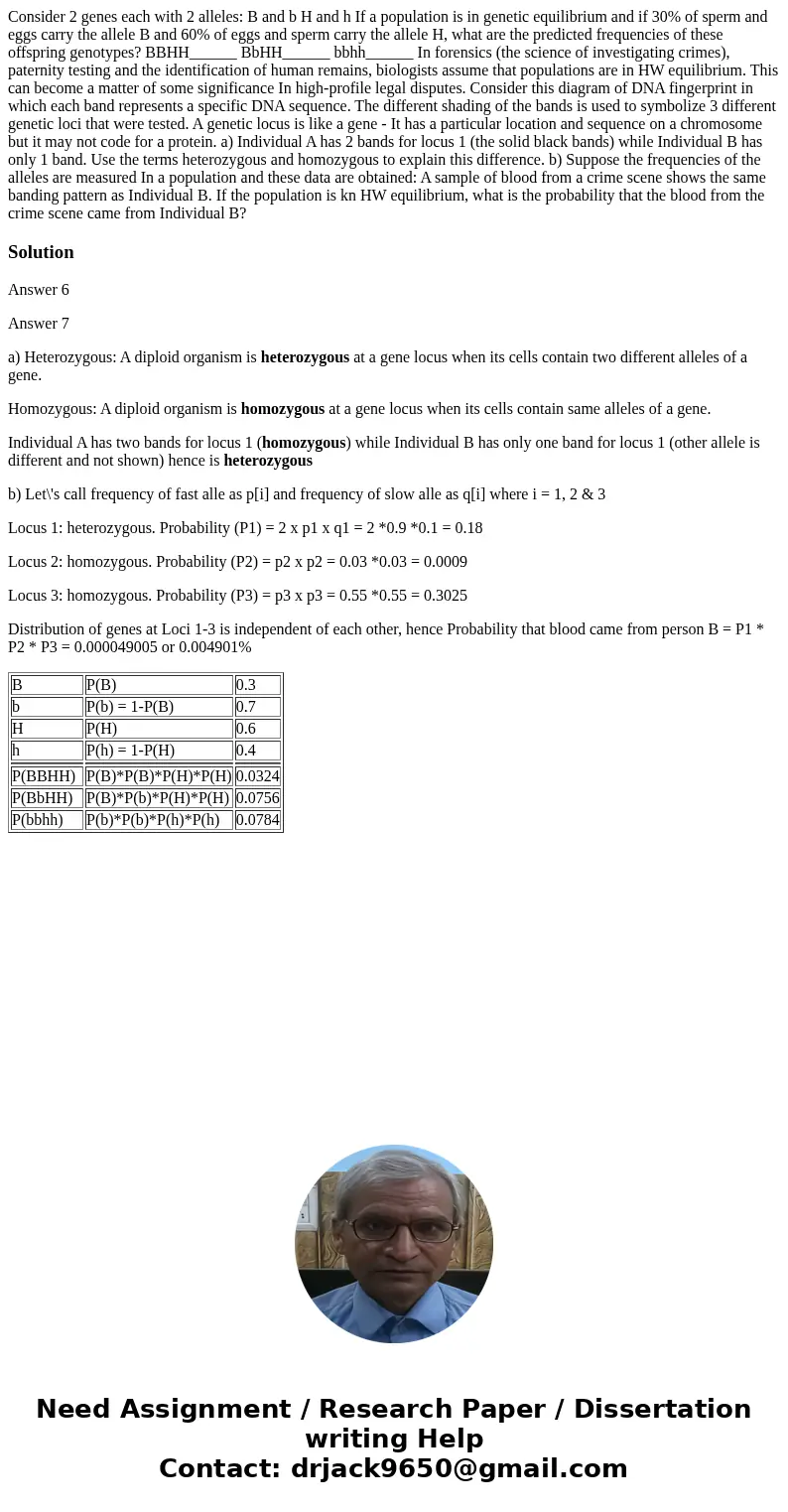Consider 2 genes each with 2 alleles: B and b H and h If a population is in genetic equilibrium and if 30% of sperm and eggs carry the allele B and 60% of eggs and sperm carry the allele H, what are the predicted frequencies of these offspring genotypes? BBHH______ BbHH______ bbhh______ In forensics (the science of investigating crimes), paternity testing and the identification of human remains, biologists assume that populations are in HW equilibrium. This can become a matter of some significance In high-profile legal disputes. Consider this diagram of DNA fingerprint in which each band represents a specific DNA sequence. The different shading of the bands is used to symbolize 3 different genetic loci that were tested. A genetic locus is like a gene - It has a particular location and sequence on a chromosome but it may not code for a protein. a) Individual A has 2 bands for locus 1 (the solid black bands) while Individual B has only 1 band. Use the terms heterozygous and homozygous to explain this difference. b) Suppose the frequencies of the alleles are measured In a population and these data are obtained: A sample of blood from a crime scene shows the same banding pattern as Individual B. If the population is kn HW equilibrium, what is the probability that the blood from the crime scene came from Individual B?
Answer 6
Answer 7
a) Heterozygous: A diploid organism is heterozygous at a gene locus when its cells contain two different alleles of a gene.
Homozygous: A diploid organism is homozygous at a gene locus when its cells contain same alleles of a gene.
Individual A has two bands for locus 1 (homozygous) while Individual B has only one band for locus 1 (other allele is different and not shown) hence is heterozygous
b) Let\'s call frequency of fast alle as p[i] and frequency of slow alle as q[i] where i = 1, 2 & 3
Locus 1: heterozygous. Probability (P1) = 2 x p1 x q1 = 2 *0.9 *0.1 = 0.18
Locus 2: homozygous. Probability (P2) = p2 x p2 = 0.03 *0.03 = 0.0009
Locus 3: homozygous. Probability (P3) = p3 x p3 = 0.55 *0.55 = 0.3025
Distribution of genes at Loci 1-3 is independent of each other, hence Probability that blood came from person B = P1 * P2 * P3 = 0.000049005 or 0.004901%
| B | P(B) | 0.3 |
| b | P(b) = 1-P(B) | 0.7 |
| H | P(H) | 0.6 |
| h | P(h) = 1-P(H) | 0.4 |
| | |
| P(BBHH) | P(B)*P(B)*P(H)*P(H) | 0.0324 |
| P(BbHH) | P(B)*P(b)*P(H)*P(H) | 0.0756 |
| P(bbhh) | P(b)*P(b)*P(h)*P(h) | 0.0784 |

 Homework Sourse
Homework Sourse